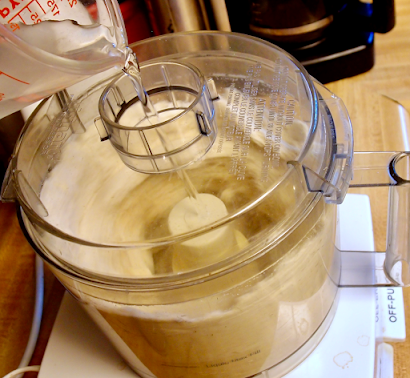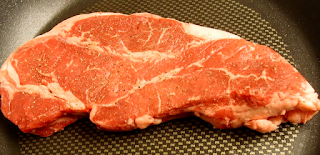28 October 2020
Recipe
from Cook's Country
I was inspired to try this recipe after seeing it demonstrated on a recent
episode of the Cook's Country TV show. With the cooler autumn weather
it seemed a perfect dinner. It looked like it would be fun to make, and though
it could take some time none of the steps are difficult and none of the
ingredients are exotic. We had a home-made chicken pot pie once before. It was
made by our daughter and had just one crust and from my
blog post
it sounds like we really liked it.
First, the crust. The dough was made in the food processor. Sour cream and an
egg were mixed in a bowl. All-purpose flour and salt were processed until
combined. Unsalted butter, chilled and cut into ½-inch cubes, was added
to the flour and pulsed until combined with the flour mixture. The sour cream
mixture was added in two batches and processed. The nascent dough was kneaded
by hand to bring the ingredients together then divided in half with each
half formed into a smooth round disk. These disks were placed in the
refrigerator for an hour to cool. After sitting on the counter for 10 minutes,
each disk was rolled into a 12-inch circle. One of these was placed in a
9-inch pie pan and the other on a baking sheet. Both were covered with plastic
wrap and returned to the refrigerator to chill.

While the dough chilled for the second time, the filling was prepared.
Butter was melted in a large saucepan and diced onions, carrots, and celery
were added with salt and pepper. After the vegetables had softened flour was
added and cooked until golden. Chicken broth and half-and-half were stirred in
and brought to a boil. Diced potatoes were added and minced fresh tarragon (in
place of thyme as specified in the recipe, because we had tarragon). This was
simmered until the potatoes were tender. Off heat, frozen peas and shredded
super-market roast chicken were added. The filling was added to the pie plate
(it made a great mound), the top crust was placed, well, on top, and the two
crusts crimped together. Rather than fluting the edge I crimped it with a fork. Four slits were cut into the crust which was then brushed
with an egg wash. The
pie was placed on a rimmed baking sheet in a 450° oven for about 20
minutes. The temperature was lowered to 375° and the pie baked until
it was deep golden brown. After cooling for 45 minutes it could be served.
Total time was about 4½ hours but this includes time for chilling
the dough, baking, and cooling, so the hands-on time was significantly less.

I had several concerns about this recipe. Would the bottom crust be soggy?
Would the crust hold up in leftovers? Would the pie be sliceable or would the
filling be runny? I am happy to report that none of these problems occurred.
The crust was crispy, top and bottom, and never got soggy, even with leftovers.
The over-stuffed pie didn't boil over and the rich, creamy filling stayed
together when it was sliced and served. It was everything you could hope for
in a cool-weather meal: lots of chicken and vegetables in a thick,
creamy sauce. The tarragon worked well, too, as a substitute for the
thyme. The effort needed to make this pot pie was worthwhile and it is worth
making again.


















































